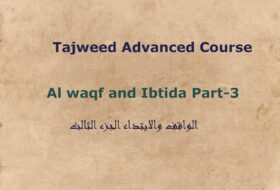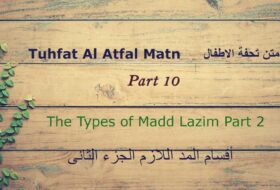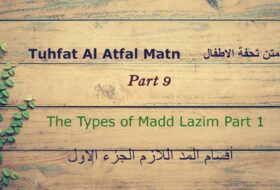What Is Tajweed Al Quran Rules ?
Tajweed Al Quran Rules means ‘proficiency’ or ‘doing something well’.
When applied to the Quran, it means giving every letter of the Quran its rights and dues of characteristics when we recite the Quran and observing the rules that apply to those letters in different situations.
We give the letters their rights by observing the essential characteristics of each letter that never leave it. And we give them their dues by observing the characteristics of each letter that are present in them some of the time and not present at other times.
Take Your Attention :
– The Quran was revealed with Tajweed rules applied to it. In other words, when the angel Jibreel ((AS)) recited the words of Allah to the Prophet Muhammad (SAW) he recited them in a certain way and he showed the Prophet (SAW) the ways in which it was permissible to recite the Quran. So it is upon us to observe those rules so that we recite it in the way it was revealed.
History of Tajweed :
At the time of the Prophet (SAW) there was no need for people to study Tajweed because they talked with what is now known as Tajweed so it was natural for them. When the Arabs started mixing with the non-Arabs as Islam spread, mistakes in Qur’an recitation started appearing, so the scholars had to record the rules. Now, because the everyday Arabic that Arabs speak has changed so much from the Classical Arabic with which the Qur’an was
revealed, even Arabs have to study Tajweed.

The ruling of reading with Tajweed :
Muhammad bin Al-Jazaree the great Quran and Hadeeth scholar of the 9th Century (Hijri) says in his famous poem, detailing the rules of Tajweed: And applying Tajweed is an issue of absolute necessity, whoever doesn’t apply Tajweed to the Quran, then a sinner is he.
The purpose of Tajweed :
The Quran is the word of Allah, and its every syllable is from Allah. Its recitation must be taken very seriously. The purpose of the Science of Tajweed in essence is to make the reciter proficient in reciting the Quran, observing the correct pronunciation of every letter with the rulings and characteristics which apply to each letter, without any exaggeration or deficiency.
The obligation of Tajweed :
The proofs that the scholars bring to show the obligation of Tajweed is that Allah says in the Quran,
أَوْ زِدْ عَلَيْهِ وَرَتِّلِ الْقُرْآنَ تَرْتِيلً
The meaning of which is: And recite the Qur’an (aloud) in a (slow and melodious) style (tarteela)
- Ali ibn Abi Talib (RA) said in the explanation of this Ayah: “at-Tarteel is Tajweed of the letters and knowing where to stop (correctly)”.[An-Nashr of Ibn Al-Jazaree 209:1].
- And of the rights of reciting correctly is reciting it the way it was revealed. There are various Ahadeeth also showing us the importance of Tajweed. Umm Salamah was asked about the recitation of the Prophet (SAW) and she described it as a recitation ‘clearly distinguished letter by letter













